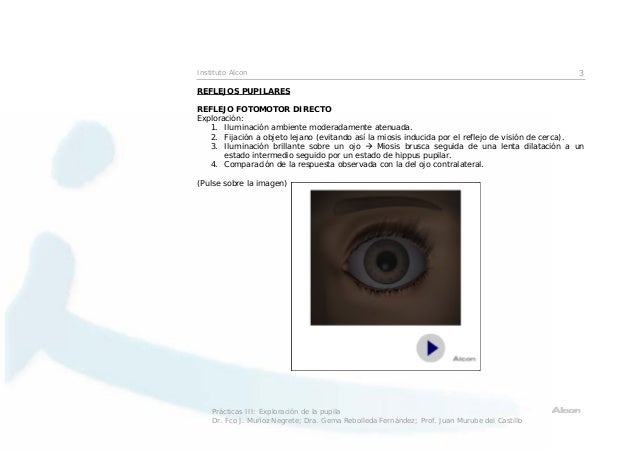

visual fields) are not possible, detecting a RAPD can be very useful as it indicates that there is more optic nerve damage in one eye than in the other, even if the visual acuity in both eyes is equal.

In glaucoma, if other tests of visual function (e.g. Indeed, the test can be used to assess the health of the retina and optic nerve behind a dense cataract, for example. If the light used is sufficiently bright, even a dense cataract or corneal scar will not give a RAPD as long as the retina and optic nerve are healthy. The efferent part of the pathway (blue) is the impulse/message that is sent from the mid-brain back to both pupils via the ciliary ganglion and the third cranial nerve (the oculomotor nerve), causing both pupils to constrict, even even though only one eye is being stimulated by the light.Ī positive RAPD means there are differences between the two eyes in the afferent pathway due to retinal or optic nerve disease.The afferent part of the pathway (red) refers to the nerve impulse/message sent from the pupil to the brain along the optic nerve when a light is shone in that eye.To understand how the pupils react to light, it is important to understand the light reflex pathway (Figure 1). This is called the consensual light reflex. When the light source is taken away, the pupils of both eyes enlarge equally. In other words, a bright light shone into one eye leads to an equal constriction of both pupils. The physiological basis of the RAPD test is that, in healthy eyes, the reaction of the pupils in the right and left eyes are linked. In this situation it is only necessary to observe the eye with the reactive pupil in order to identify an RAPD. Returning the light to the right eye results in constriction of the right pupil again. fixed pupil and optic neuropathy), the right pupil dilates (constricts less). When the light is moved to the abnormal left eye (e.g. Illumination of the relatively normal right eye causes only right pupil constriction. Swinging-light test: left RAPD + non-reactive left pupil Returning the light to the (relatively) normal right eye results in constriction of both pupils again. with optic neuropathy), both pupils dilate (constrict less), the left pupil dilating despite the light being shone directly at it. When the light is moved to the (more) abnormal left eye (e.g.

Illumination of the (more) normal right eye causes both pupils to constrict. Illumination of either eye induces normal and equal pupil responses in both eyes (consensual responses). The light reflex pathway showing the afferent path (red) and the efferect path (blue) © John Yaw-Jong Tsai, Touro University Figure 2. The test can be very useful for detecting unilateral or asymmetrical disease of the retina or optic nerve (but only optic nerve disease that occurs in front of the optic chiasm). The ‘swinging light test’ is used to detect a relative afferent pupil defect (RAPD): a means of detecting differences between the two eyes in how they respond to a light shone in one eye at a time. David C Broadway Consultant ophthalmic surgeon, Department of Ophthalmology, Norfolk & Norwich University Hospital, and Honorary Reader, University of East Anglia, Norwich,UK.


 0 kommentar(er)
0 kommentar(er)
